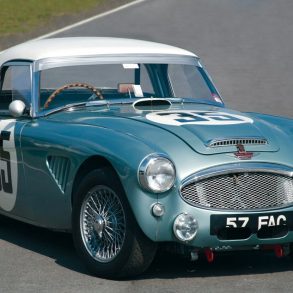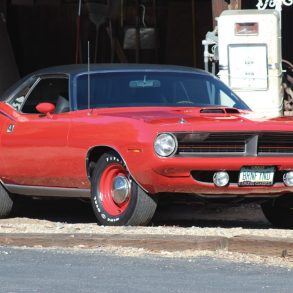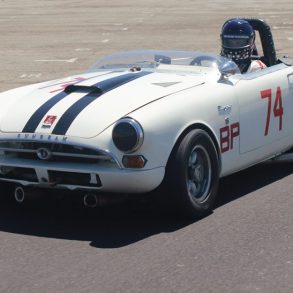This month one of the most iconic Mustangs to ever hit the road is going up for auction, the 1968 Bullit Ford Mustang GT.
So, it got me thinking about what the Mustang means to so many people. The original Bullitt car is likely to sell for millions of dollars. And rightly so. The Mustang is very likely the greatest modern American automobile of all time.
It’s hard to imagine that the design and development of the first iteration of the Mustang dates back 60 years. Think about that for a moment. The year is 1960. Cars are physically enormous, tail fins are everywhere, Connie Francis has a number one song on AM radio, and three grown adults can sit across the front or rear seat of most American cars cruising the highway at 75 mph, burning gas at .28 cent per gallon. General Motors owned nearly 70% of automobile production throughout the entire world, and virtually everyone who wanted a car was looking for a mobile status symbol to validate their success.

But at Ford, in 1962, Lee Iacocca and his team of designers and developers had just launched the internal development program heading in a completely different direction. Two years later, they delivered the Mustang to eager dealerships and a frenetic public.
People camped outside Ford dealerships to get their hands on the Mustang. It was the iPhone, long before Apple. The clamor, it turns out, was what Iacocca had suspected; people wanted a new type of car. The Mustang was a clean, simple design with enough variety in options to deliver everything from a simple beige six-cylinder economy minded coupe to a performance packed red fastback with racing stripes and sporty instrumentation.
Sales for the Mustang went way beyond expectations, with 415,000 units delivered in less than a year. But it wasn’t just the car, it was a celebration of the lifestyle and changing population that made the Mustang an icon of youthful vigor and vitality. Just a few weeks prior to the Mustang announcement, the Beatles made their debut on “The Ed Sullivan Show”, and the Civil Rights Act was signed into law. All of these things signaled a shift from the stodgy post-war mentality and buttoned up mindsets of the 1950s. There was no stopping the ’60s, and the Mustang led the pack as a key feature of action movies, racing, and as a boastful but understated middle-class fashion trend setter – one that plumbers, school teachers, or accountants could proudly own.

A large part of the Mustang mystique lies in the simplicity of the design. Driven primarily by cost constraints, the Mustang was developed as a variant of the Falcon, built using as many components from the existing unibody line including much of the interior and nearly all the drivetrain components. But the austerity of the Mustang was further heightened by the remarkably clean and uncluttered lines established by Joe Oros and his Ford design team who won the internal design competition, establishing the look for the new body panels that would become the Mustang. Driven by a series of “Ferrari-like” front end ideas, but with a clean chiseled and linear body side, the Mustang delivered a fresh new look to the automotive landscape. Taut and compact with minimal chrome trim, the Mustang conveyed tailored elegance at a modest price. Like much of the fashion trends moving across America at this time, the Mustang was trim and understated, but what it lacked in opulence, it more than made up for in performance and reliability. Although the Mustang spawned multiple competitors from other manufacturers, it continued to maintain a lead sales position for years to come as the platform got larger, then smaller and more economical, before thankfully returning to the performance roots that icons like Shelby, Bullit, Hertz, Saleen, and many others cultivated.
Six decades later, the Mustang still remains one of the most sought-after collector cars. With years of production and fans that preserve their cars, tens of thousands of vintage Mustangs remain today. And for anyone seeking a car that embodies the adventurous ’60s, Muscle Car performance, and the style of post-modern America, the Mustang is the best choice for nostalgic automotive fulfillment. Legions of Mustang clubs, thousands of secondary supplier sources, a wide range of customization options, and a host of on-line support groups all contribute to the Mustang mystique. Whether buying a $5,000 restoration project or a $300k Shelby GT350 show car, the range of Mustangs on the market will surely offer any collector a fantastic and capable car that will serve their driving passions.
But is the Mustang destined to become a relic of the past? Ford announced this year that their new compact SUV was going to not only be electric, but it was going to bear the Mustang name. An electric Mustang SUV, while a significant departure from the original market-maker that set new standards for automobile design and production, is very likely the direction that all car makers will be exploring in the near future – leveraging legacy brands with modern technology and packaging to serve new audiences. The reality is, as great as the original Mustang was, the concept is no longer viable for today’s buyers.

Just like the original name inspired, the Mustang is a free-roaming horse that was important to the foundation of early America. In 1971, the United States Congress recognized that (paraphrased) “Wild Mustangs are living symbols of the historic and pioneer spirit of the West, which continue to contribute to the diversity of life forms within the Nation and enrich the lives of the American people.” All the more reason to buy a vintage Mustang and enjoy the benefits of a bygone era, one that very likely will never be repeated. And while modern technology and the conveniences of same day service, instant online sports stats, and driverless technology can be beneficial, the independence of piloting a vintage vehicle without big-brother watching every shift point reminds us of why we drive in the first place. It’s not just to get to your next destination, it’s being in control of your destiny, regardless of where you decide to drive.
Raffi Minasian is a six-time Mustang owner including a ’69 Boss 302 and ’86 SVO.











